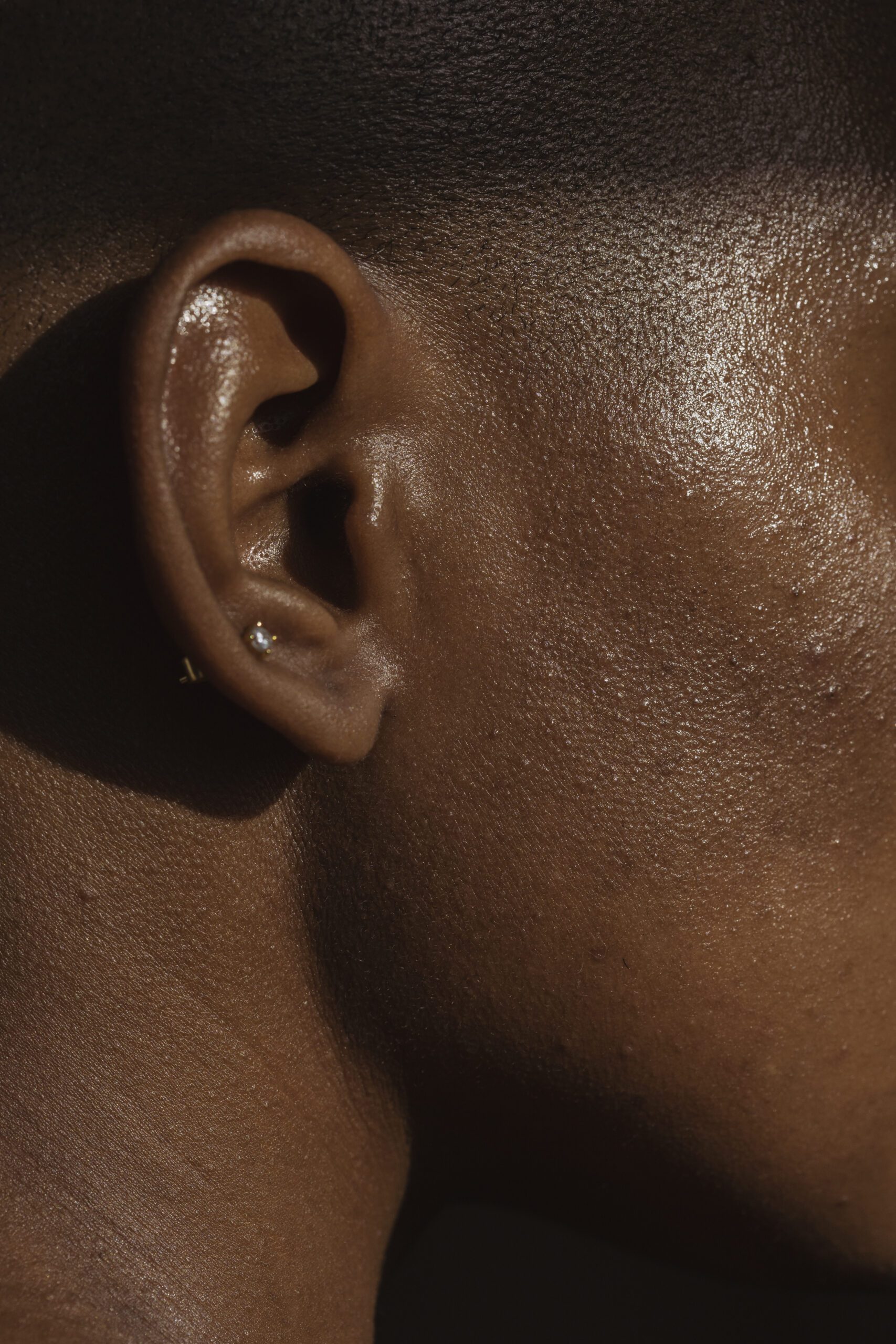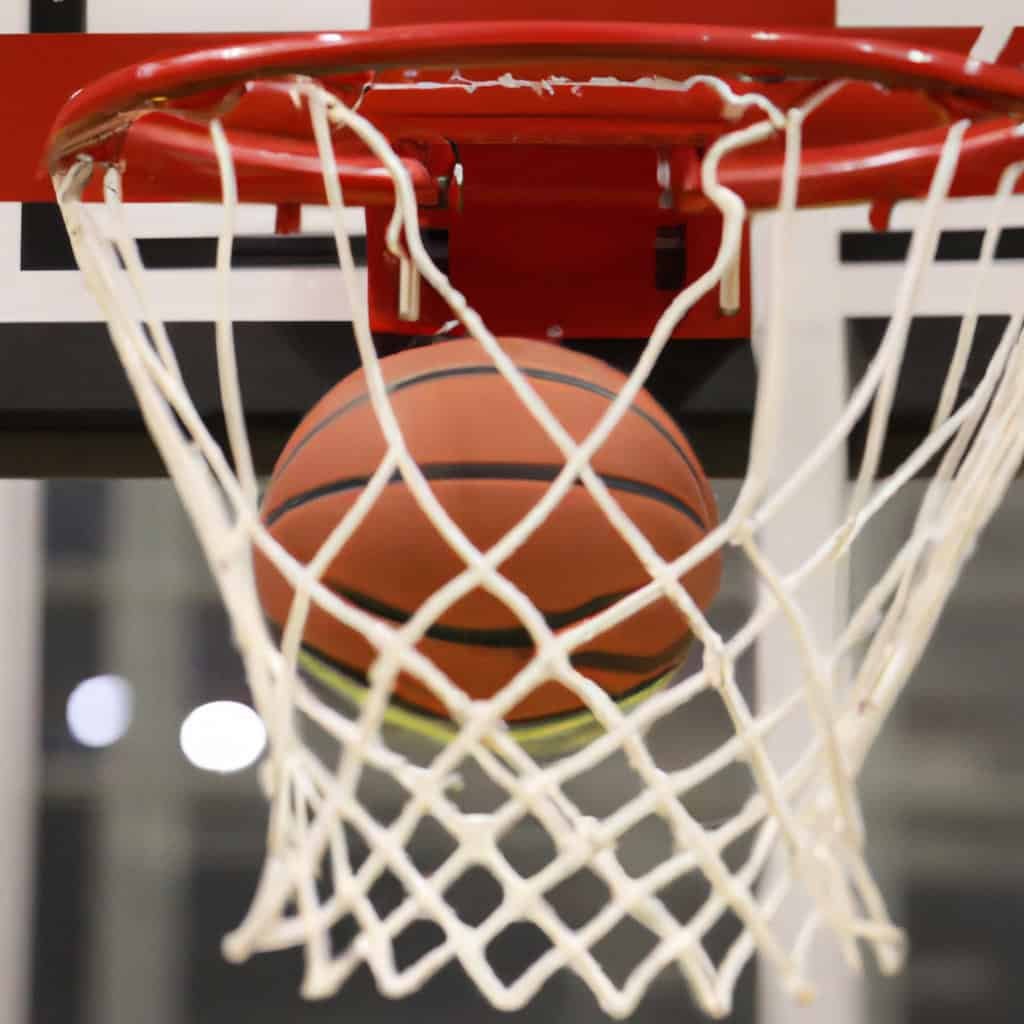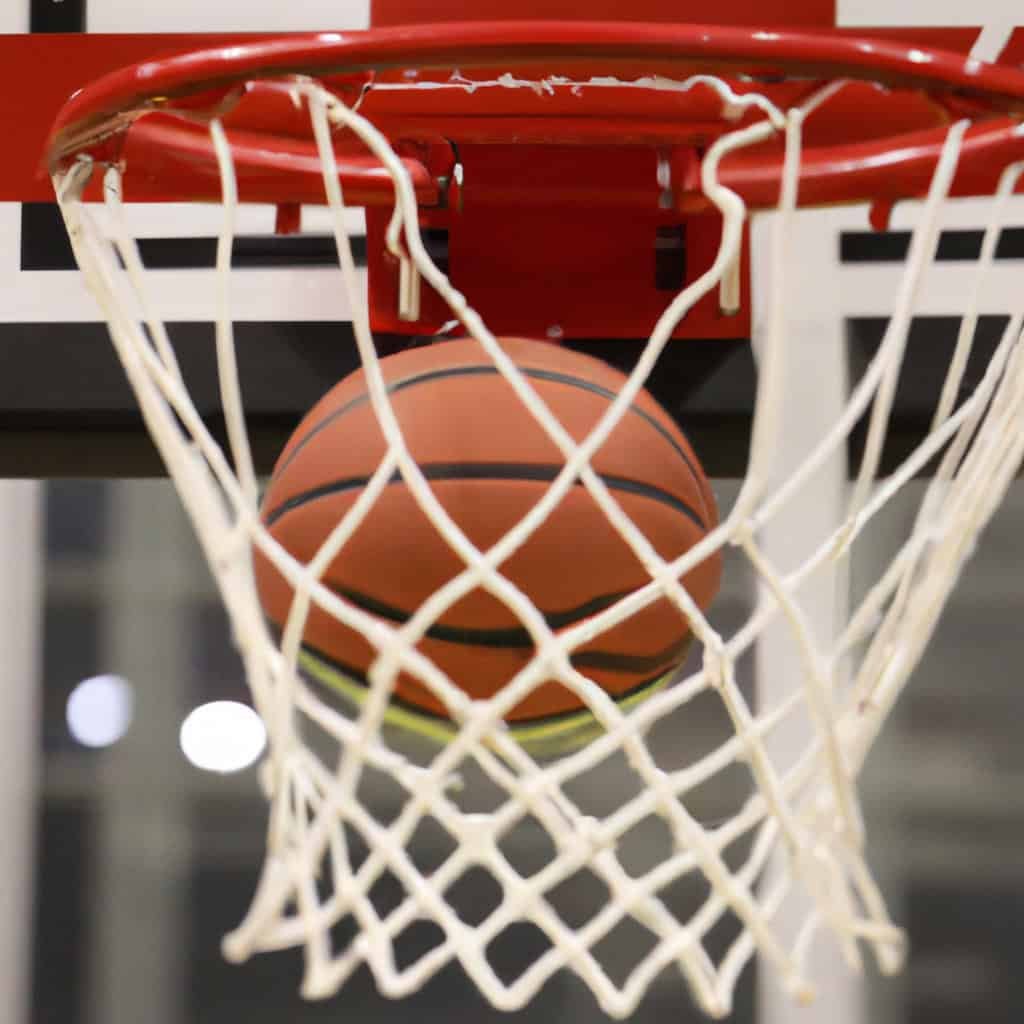When it comes to playing basketball, ensuring the safety of players is of utmost importance. That’s why it’s essential to know what key safety features to look for in basketball rims, backboards, and nets. From durable construction to breakaway rims and padding, this article aims to provide you with valuable insights on how to choose the safest equipment for a worry-free game on the court. So, let’s explore the key safety features together and make sure your basketball experience is not only enjoyable but also secure.

Material of the Rim
When it comes to basketball hoops, the material of the rim is an important factor to consider for both safety and durability. There are three main types of rim materials to choose from: steel rims, breakaway rims, and flex rims.
Steel rims
Steel rims are the most basic and traditional option. They are constructed with a solid steel ring and offer a sturdy and reliable option for basketball players. However, they lack the flexibility and breakaway feature of other rim materials, which can increase the risk of injury during intense gameplay.
Breakaway rims
Breakaway rims are designed with a hinge mechanism that allows the rim to bend downward when pressure is applied. This feature helps to prevent injuries by reducing the force of impact when players dunk or hang onto the rim. Breakaway rims are commonly used in competition settings and are known for their enhanced safety.
Flex rims
Flex rims provide a combination of strength and flexibility. They are designed to have a certain degree of give, allowing the rim to absorb and distribute force while maintaining its shape. This feature can help to prevent injuries and avoid damage to the backboard. Flex rims are a popular choice for recreational and professional players alike.
Padding on the Backboard
In addition to the rim material, the padding on the backboard is another crucial safety feature to consider. Proper padding can help reduce the risk of injury during collisions with the backboard. There are three types of padding commonly used: backboard padding, edge padding, and goal padding.
Backboard padding
Backboard padding refers to the foam or cushioning material that covers the entire surface of the backboard. This padding is designed to minimize the impact for players who come into contact with the backboard during aggressive play. It is essential to ensure that the backboard padding is securely attached and provides sufficient protection.
Edge padding
Edge padding is specifically designed to cover the sharp edges of the backboard. This type of padding helps to prevent cuts and bruises that could occur during accidental contact or collisions near the edges. Edge padding should be well-fitted and securely anchored to the backboard to ensure maximum safety.
Goal padding
Goal padding, also known as hoop padding, is the padding that surrounds the area where the rim is attached to the backboard. This padding is crucial in preventing injuries caused by players accidentally colliding with the goal area. It provides an extra layer of protection and should be made from durable and shock-absorbing material.
Rim Attachment System
The rim attachment system is an important aspect to consider when evaluating the safety of a basketball hoop. There are three main types of attachment systems: bolt-on rim systems, welded rim systems, and quick-release rim systems.
Bolt-on rim systems
Bolt-on rim systems are the most common type of attachment system. They involve attaching the rim directly onto the backboard using bolts and nuts. While bolt-on rim systems provide a secure attachment, they lack the flexibility and breakaway features of other systems, which can increase the risk of injury during aggressive play.
Welded rim systems
Welded rim systems are considered the most durable and permanent attachment option. The rim is welded directly onto the backboard, creating a sturdy connection. However, this system lacks the ability to absorb impact and reduce the risk of injury during player contact, making it less suitable for high-intensity play.
Quick-release rim systems
Quick-release rim systems offer the advantage of easy removal and replacement of the rim. They typically use a clamp or latch mechanism to secure the rim to the backboard, allowing for convenient maintenance and storage. However, it is crucial to ensure that the quick-release mechanism is reliable and secure to prevent accidents during gameplay.
Rim Diameter and Strength
The diameter and strength of the rim are essential considerations for safety and performance on the basketball court. Official rim sizes and high-strength rims are two aspects to look out for.
Official rim diameter
The official rim diameter used in professional basketball leagues, such as the NBA and NCAA, is 18 inches. Choosing a rim with this standardized diameter ensures compatibility with regulation-size basketballs and helps maintain a consistent playing experience. It is important to check the diameter specifications when purchasing a basketball hoop to ensure compliance with official standards.
High-strength rims
High-strength rims are designed to withstand intense gameplay and heavy impact. They are constructed with durable materials, such as reinforced steel, that can withstand the force exerted during dunks and aggressive play. Investing in a high-strength rim can help prevent accidents and prolong the lifespan of the basketball hoop.

Shatterproof Backboards
The material of the backboard plays a critical role in ensuring safety during basketball games. Shatterproof backboards are designed to minimize the risk of broken glass or other materials that could cause serious harm. There are three common types of shatterproof backboards: tempered glass, polycarbonate, and acrylic.
Tempered glass backboards
Tempered glass backboards are the top choice for professional leagues and high-level competitions. They offer excellent ball response and provide a similar rebound to what players experience on indoor courts. Tempered glass is highly durable and resistant to shattering, making it a safe option for intense gameplay.
Polycarbonate backboards
Polycarbonate backboards are a popular choice for recreational and outdoor use. They are known for their durability and impact resistance. Polycarbonate is a lightweight material that can withstand aggressive play and even rough weather conditions. While polycarbonate backboards may not offer the same level of ball response as tempered glass, they provide a safe and long-lasting option for basketball enthusiasts at various skill levels.
Acrylic backboards
Acrylic backboards are a mid-range option that combines durability and affordability. They offer good rebound and are suitable for recreational and intermediate level play. Acrylic is lighter than tempered glass and provides a shatterproof surface, making it a safe choice for home use. However, acrylic backboards may not provide the same level of durability as tempered glass or polycarbonate.
Rim Flexibility
The flexibility of the rim is an important safety feature to consider, especially during high-intensity gameplay. Rim flexibility can help absorb impact, reduce the risk of injury, and minimize damage to the backboard. There are several mechanisms used to achieve rim flexibility: shock-absorbing springs, torsion spring systems, and hydraulic rim dampeners.
Shock-absorbing springs
Shock-absorbing springs are commonly used in breakaway rims to provide flexibility and cushioning. These springs allow the rim to bend downward when pressure is applied, helping to reduce the force of impact during dunks or aggressive play. The springs absorb and release energy, ensuring a safer and more controlled playing experience.
Torsion spring systems
Torsion spring systems are another type of mechanism used in flexible rims. These systems use a combination of springs and tension to provide rim flexibility. Torsion springs allow the rim to move and absorb force, providing a safer play environment. They offer a consistent level of flexibility and can be adjusted to meet specific player preferences.
Hydraulic rim dampeners
Hydraulic rim dampeners are designed to control the rim’s movement and provide a more controlled and controlled bend. These systems use hydraulic fluid to absorb and distribute force, minimizing the risk of injury during aggressive play. Hydraulic rim dampeners ensure a gradual and controlled descent of the rim when pressure is applied, providing enhanced safety.

Net Material and Attachment
The choice of net material and attachment method also contributes to the overall safety of a basketball hoop. Nets should be made from durable materials that can withstand regular use and provide a reliable playing experience. There are three common net materials: heavy-duty nylon nets, chain nets, and net attachment methods to consider.
Heavy-duty nylon nets
Heavy-duty nylon nets are the most common and widely used option in basketball. They are known for their durability, weather resistance, and ability to withstand intense play. Heavy-duty nylon nets provide reliable ball containment and are less prone to tangling or fraying. They are a cost-effective and safe choice for basketball enthusiasts.
Chain nets
Chain nets offer a distinct aesthetic appeal and durability. Made from metal chains, these nets provide a unique sound and feel when the ball passes through. Chain nets are highly resistant to wear and tear, making them suitable for outdoor courts and heavily used basketball hoops. However, it is important to ensure that the chains are secured properly and do not pose any risk of personal injury.
Net attachment methods
The attachment method for securing the net to the rim is an essential consideration for safety. The net should be securely fastened to prevent it from becoming tangled or causing accidents during gameplay. Common attachment methods include hooks, clips, or loops that ensure a snug fit and prevent the net from getting dislodged. It is important to regularly check and maintain the net attachments to ensure maximum safety.
Backboard Stability and Mounting
Backboard stability and mounting play a crucial role in maintaining a safe playing environment. A sturdy backboard frame, strong mounting brackets, and overhang support are important factors to consider.
Sturdy backboard frames
The backboard frame provides the foundation and support for the entire basketball hoop system. It should be constructed from high-quality materials, such as steel or aluminum, to ensure stability and security during intense gameplay. A sturdy backboard frame helps minimize vibrations and ensures that the hoop remains in place, reducing the risk of accidents and injuries.
Strong mounting brackets
Mounting brackets are used to secure the backboard to the rest of the basketball hoop structure. They should be made from robust materials and designed to withstand the pressure and force exerted during play. Strong mounting brackets ensure that the backboard remains securely in place and reduce the risk of detachment or collapse, providing a safe playing experience.
Overhang support
Overhang support refers to the distance the backboard extends beyond the supporting pole or structure. It is important to have a sufficient overhang to allow for safe play and avoid collisions with the supporting structure. A proper overhang ensures that players have enough space to maneuver under the basket without the risk of injury. It is recommended to have a minimum overhang of four feet for recreational play and at least six feet for official competition settings.

Safety Standards and Certifications
Basketball rims, backboards, and nets should meet certain safety standards and certifications to ensure their reliability and compliance with industry regulations. The three main standards to look out for are NBA and NCAA standards, ASTM standards, and EN standards.
NBA and NCAA standards
The National Basketball Association (NBA) and the National Collegiate Athletic Association (NCAA) set specific safety standards for basketball equipment used in professional play. These standards cover various aspects, including rim solidity, backboard dimensions, and net attachment specifications. Choosing basketball equipment that meets NBA and NCAA standards helps ensure a high level of safety and performance.
ASTM standards
The American Society for Testing and Materials (ASTM) has established a set of standards for basketball equipment. These standards focus on safety requirements, including impact resistance, durability, and performance specifications for rims, backboards, and nets. ASTM-certified basketball equipment provides an assurance of quality and safety.
EN standards
The European Committee for Standardization (CEN) has developed safety standards specifically for basketball equipment within the European Union. These EN standards cover areas such as impact resistance, deflection, and material requirements. Ensuring that basketball equipment meets the relevant EN standards is important for maintaining safety and compliance in European countries.
Protrusion Protection
Protrusion protection is a crucial safety feature, especially for basketball hoops used in residential settings or areas with high foot traffic. It involves preventing hazards such as sharp edges, breakaway mechanisms, and safe rim height adjustment systems.
Breakaway mechanisms
Breakaway mechanisms are designed to prevent serious injuries in the event of intense player contact with the rim. These mechanisms allow the rim to release or detach from the backboard if excessive force is applied, reducing the risk of harm to players. Breakaway mechanisms are particularly important for residential hoops where children and less experienced players may be involved.
No sharp edges
Ensuring that there are no sharp edges on the basketball hoop is essential for the safety of all players. Any exposed or protruding parts, such as bolts or screws, should be covered or recessed to prevent accidental cuts or injuries. Regular maintenance and inspection should be carried out to identify and address any potential sharp edges.
Safe rim height adjustment systems
Basketball hoops that offer adjustable rim height are popular for accommodating players of different ages and skill levels. However, it is crucial to ensure that the adjustment mechanism is safe and secure. Look for systems that allow for easy and smooth height adjustments without the risk of fingers getting caught or sudden drops in height. Safe rim height adjustment systems provide convenience without compromising player safety.
In conclusion, when selecting basketball rims, backboards, and nets, it is essential to prioritize safety features. Consider the material of the rim, such as steel, breakaway, or flex, to provide the necessary strength and flexibility. Adequate padding on the backboard, including backboard, edge, and goal padding, helps prevent injuries during accidental contact. Evaluate the rim attachment system, such as bolt-on, welded, or quick-release, for stability and ease of use. The rim diameter, strength, and flexibility contribute to overall safety, and shatterproof backboards made from tempered glass, polycarbonate, or acrylic reduce the risk of injury from shattered glass or other materials. Look for rim flexibility mechanisms like shock-absorbing springs, torsion spring systems, or hydraulic rim dampeners for additional safety during intense gameplay. Consider net material, such as heavy-duty nylon or chain, and secure net attachment methods to prevent tangling and accidents. Backboard stability and mounting with sturdy frames, strong brackets, and overhang support enhance safety. Make sure the basketball equipment meets safety standards and certifications, including NBA and NCAA, ASTM, and EN standards. Finally, prioritize protrusion protection, such as breakaway mechanisms, no sharp edges, and safe rim height adjustment systems, to minimize the risk of accidents and injuries. By considering these key safety features, you can select basketball equipment that promotes a safe and enjoyable playing experience for all.

